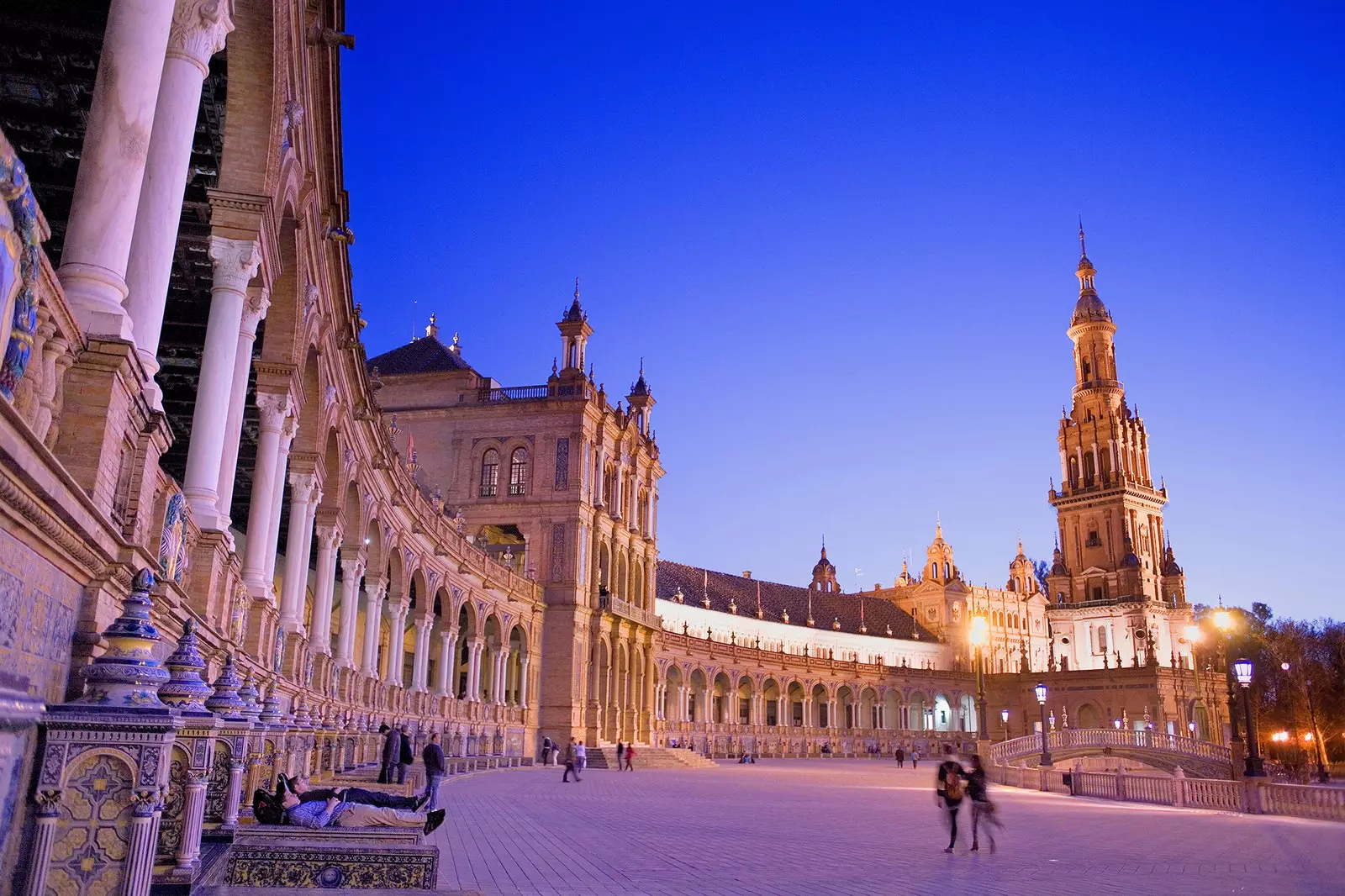
Seville, the city that celebrates Murillo
** Seville at the end of the 16th century ** was one of the first cities in Hispanic territory and the waters of the Guadalquivir were synonymous with entry of dreams, of hope and of a new world.
The Port of the Indies saw the arrival of large ships loaded with gold, silver and raw materials from the Americas, since the city served as a link between the Old and the New World.
During that period, his grandeur was such that Madrid and Barcelona , at his side, were nothing more than two villas with great aspirations and few opportunities . In the heat of this commercial monopoly, Seville became the largest city in Spain and one of the largest metropolises in Europe. Something like the New York of our time.
Fifty languages were spoken in its streets and all kinds of people, characters and personalities from all over the world flocked to it, ready to make the leap to the New World.
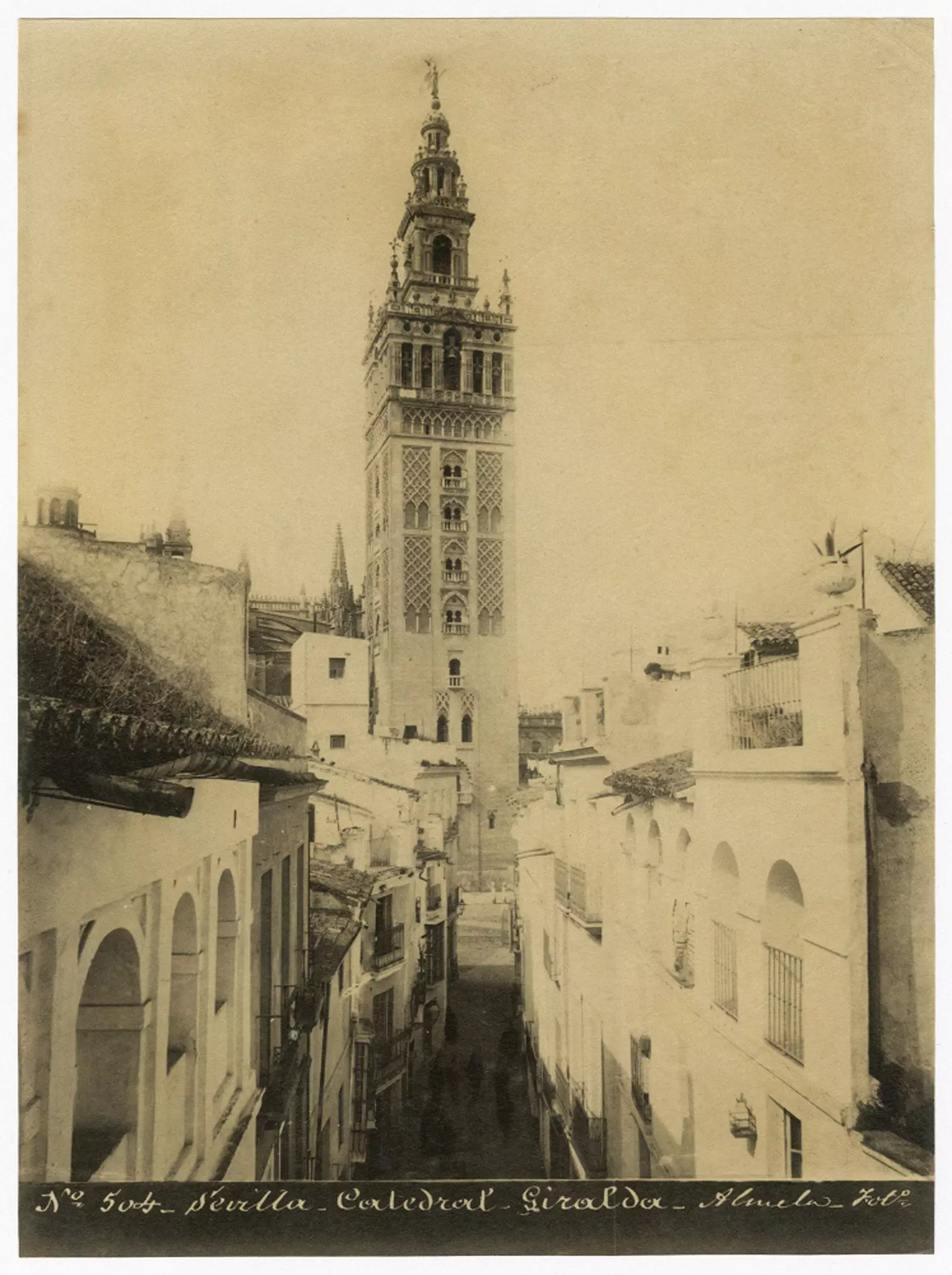
The greatness of La Giralda in the XIX
But, in the middle of the following century, the city fell ill twice: on the one hand, economically , since the Port of the Indies moved to ** Cádiz ** and, on the other hand, ** a terrifying epidemic of the black plague ** arrived chilling the blood of the entire continent.
The city went through a major demographic and economic crisis and after that Imperial Seville never managed to recover.
Precisely in this context, on any given day in December 1617, in a house near the Convent of San Pablo, a boy was born: Bartolome Esteban Murillo . Who would end up trapping on his canvases the history of his time and who would be known as the "star of Seville".
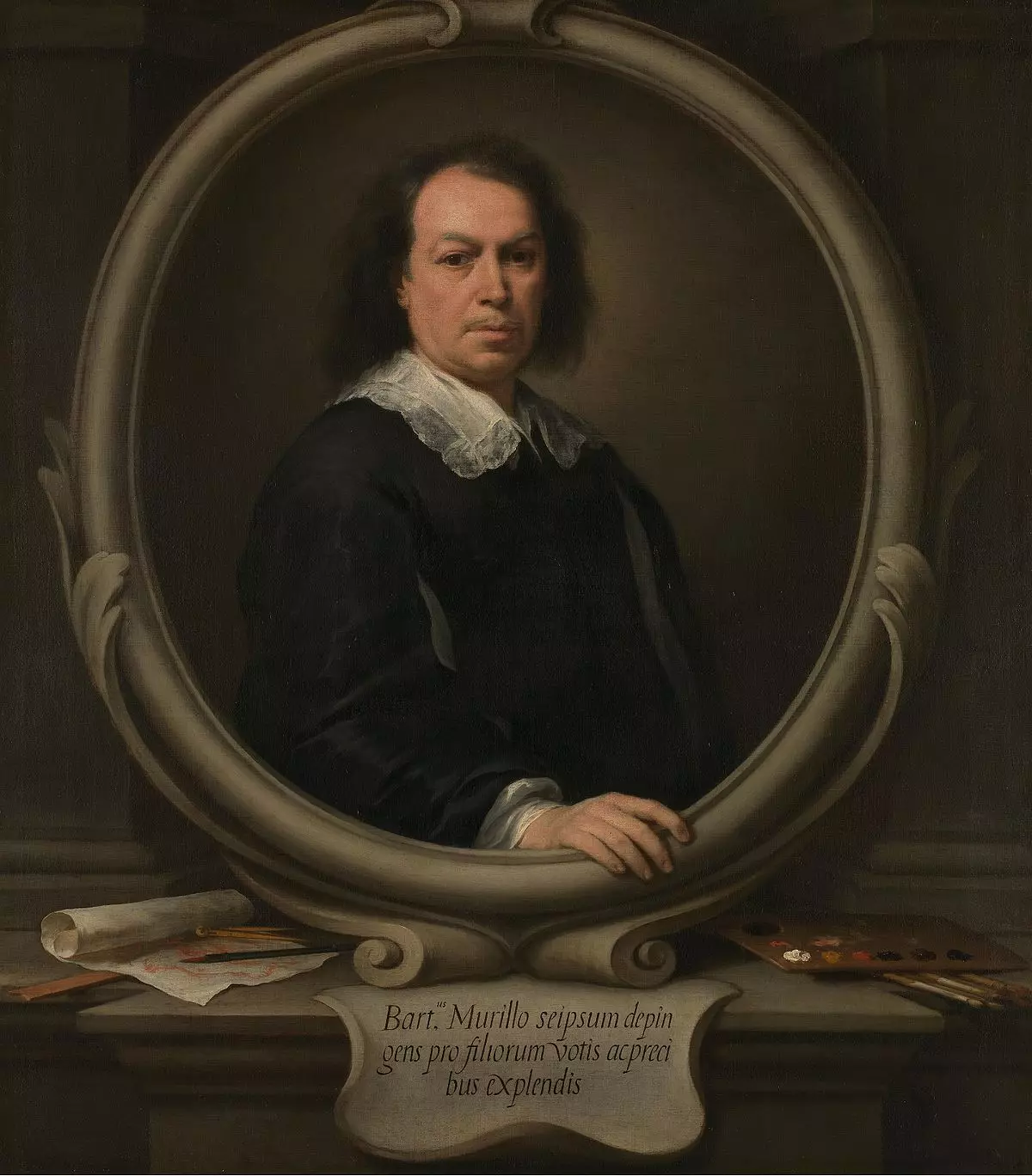
Self-portrait of Bartolomé Esteban Murillo, the “star of Seville”
400 years ago from that moment and the city where he was born, grew up and died has not stopped celebrating and proclaiming this great painter. On the fourth centenary of his arrival in the world Seville wants to commemorate his life and work through different exhibitions, theater shows, cinema, music or cultural routes to recognize his figure as an ambassador of the talent and potential of the city and to publicize corners and spaces where the artist left his mark so long ago.
The city of Seville surrenders to Murillo and dedicate all year 2018 to honor the most famous spanish baroque painter . We can see the painter's works in different museums, halls and institutions distributed in different parts of his hometown.
An unbeatable opportunity to discover a total and surprising Murillo, since it will allow us to access the very wide profile of this absolute artist of the Baroque who revolutionized painting due to his way of telling the religiosity of the time and his costumbrista paintings. His work serves as a window to look directly into the eyes of the bankrupt Spain of the 17th century.
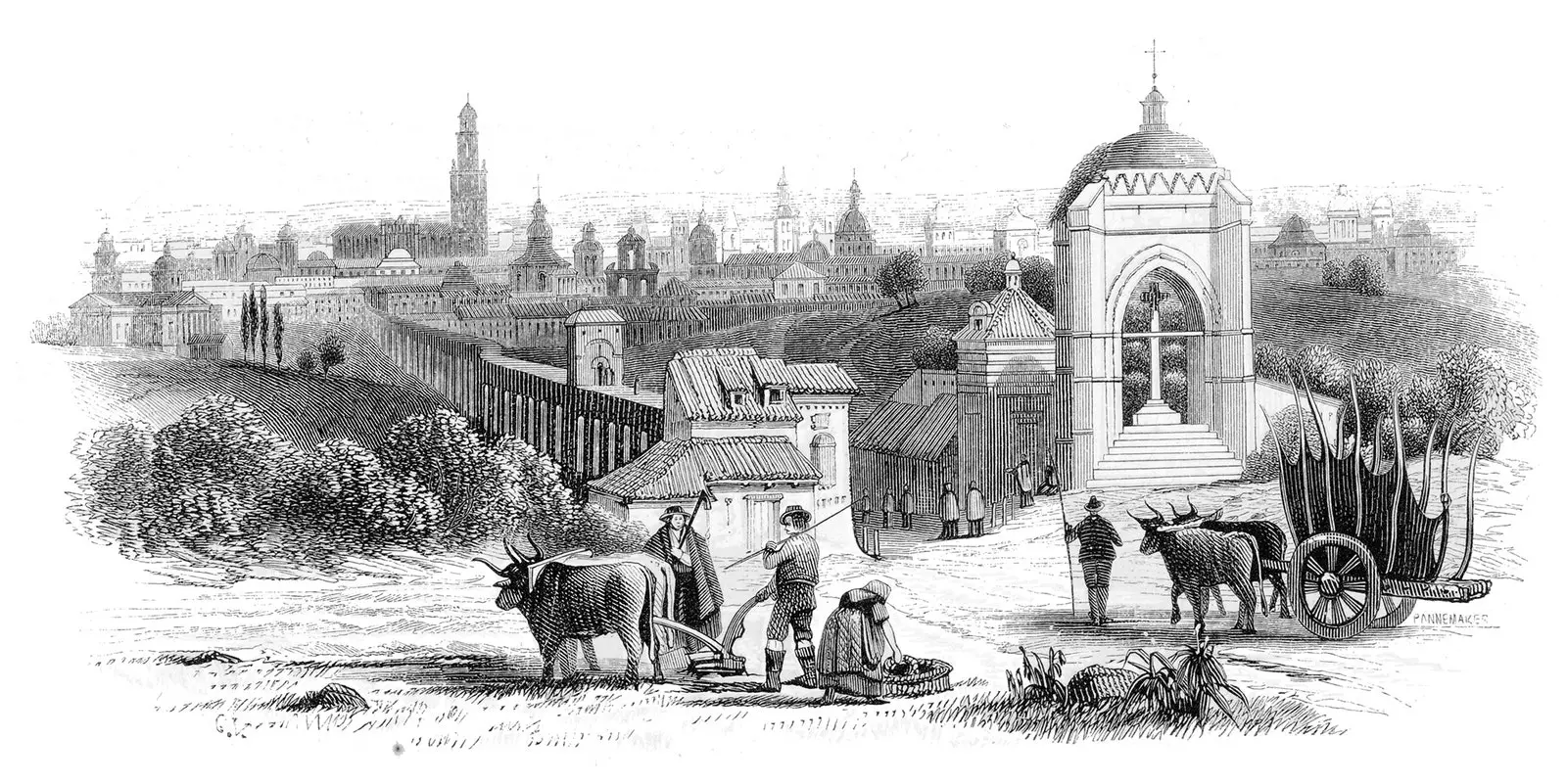
Engraving of Seville from the year 1848
THE PAINTER OF HOPE
It is no secret that we are facing one of the most valued artists of his time and, also, the best paid of the 17th century, above Diego Velazquez, Alonso Cano and Francisco de Zurbarán.
He was the most outstanding baroque painter of the Sevillian school and the most appreciated outside of Spain, since, during the French invasion in 1810, the Napoleonic troops plundered many of his works that have ended up scattered throughout the world. Paradoxically, This looting of Murillesque work made him an international artist already in the 19th century..
The life of Bartolome Esteban Murillo it was marked by complex family relationships, as he was orphaned as a child; by the doctrine from the Trento council ; also, due to the economic decline that he began to experience in Seville and; above all, due to the arrival, in February 1649, of the Black Death who killed, daily, about a thousand people, among them it is believed that two of his sons and great and important friends of his. All these events conditioned, in many ways, his pictorial career.
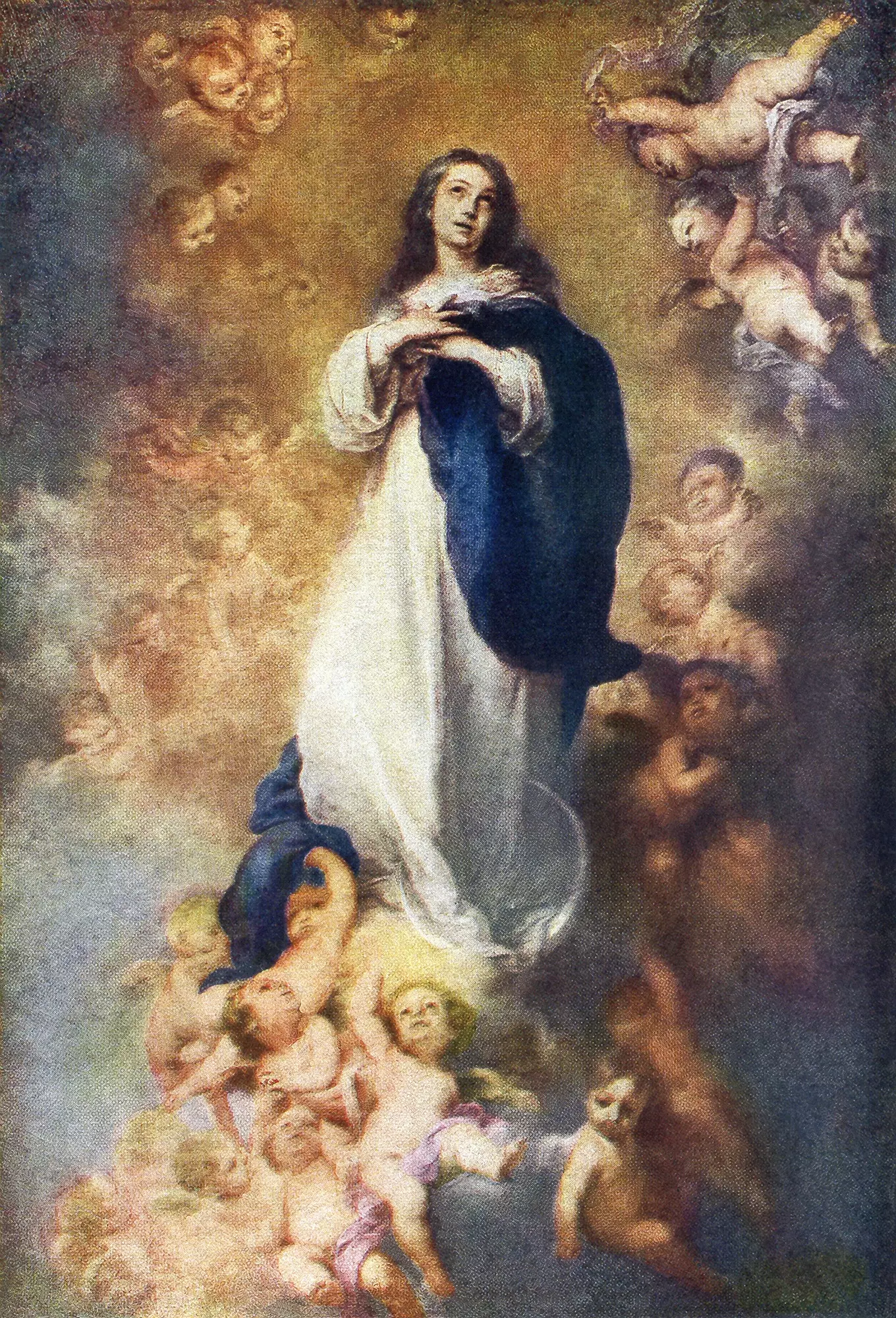
Murillo's 'Immaculate Conception'
After the plague epidemic, where the population was decimated, as more than 40% of the Sevillian population Murillo understood that he should not wallow in the suffering of his time, but rather his creations must serve for relief, consolation and hope.
This is how his vision of the divine changed and he found in heaven a sweet and welcoming place . In this regard, and thanks to the iconographic images of his Immaculate Conception , his work could, in part, serve as what would today be known as art therapy, because it responded to a need for consolation felt by Sevillian society.
It is not that Murillo did not perceive what was happening around him, he saw the same as everyone else in Seville in the seventeenth century, but he preferred to reflect with dignity the crude reality of the time in which he lived and paint the hope and consolation that was needed , since he was not in favor of capturing what could mournfully affect popular sentimentality.
Pigeonholed, on many occasions, as pious and prim , Murillo was, on the other hand, the great protagonist of the pictorial revolution of secular art and, in his pictures, you can glimpse a surprising and unexpected air of sensuality.
The Immaculate Virgins of Murillo they were the prototype of the Andalusian woman and the beauty that they gave off was so perfect, so virginal, so splendid and human at the same time; that they became a erotic myth in France.
Murillo was extremely demanding with his art until the end. The Andalusian painter was commissioned, in 1681 , the painting of the altarpiece of The Capuchins of Cadiz , a large piece that required the help of a scaffold so that he could carry out the upper parts of the work. While on said scaffolding, he tripped and fell to the ground, which led to his death a few months later.
LIVE THE CITY OF MURILLO
Despite the fact that Murillo's life and work are so intimately linked to Seville, he left no visual reminder of seventeenth-century Seville. Even so, Murillo's imprint on the city is still very present.
In some cases, you can admire his canvases in the same places for which they were conceived, such as in the exhibition ' Murillo in the Cathedral: the gaze of holiness' , where you can see a series of 16 works that he made for the town hall in its original locations, among them, Saint Ferdinand, The Virgin delivering the Rosary to Santo Domingo either Blessed Dorothea , in addition to a large number of documents that show the close link he had with this institution.
Undoubtedly, one of the most complete itineraries to learn more about the painter is ** In the footsteps of Murillo **, a route that goes through 21 buildings he frequented, or for which he made some of his most relevant paintings.
A tour that takes us through some of the key points of Seville in the 17th century following in the footsteps of the artist and in which you can admire more than 50 original paintings and about 80 reproductions.
The Murillo House , in the neighborhood of Santa Cruz, will be the starting point of this trip to the Murillesque Baroque . It was the penultimate home of the artist and has a projection room and a children's area in which courses, workshops and concerts are held with special attention to the presence of children in his work.
Another essential stop is the Charity Hospital , from the 17th century, with whom he was closely linked personally and professionally, becoming a member of the Brotherhood of Holy Charity .
His church still preserves seven original paintings, among them, Saint Elisabeth of Hungary curing the smutty either The multiplication of the loaves and fishes . Also, copies of works that were stolen during the French invasion are exhibited and that currently belong to different museums around the world.
The institution also organizes dramatized visits that help the visitor to discover the theme, style and validity of the Murillo's work through activities and games . It is also mandatory to visit the Museum of Fine Arts , where you can see large canvases by the master, such as The Virgin with the Child Y Immaculate.
The offer is extensive and you can enjoy Murillo in almost every corner of the city. The celebration has already begun and with the arrival of spring, a time of year that, as is well known by all, suits Andalusia so well, its capital serves as a guiding thread for everything there is to know about the “star of Seville”.
